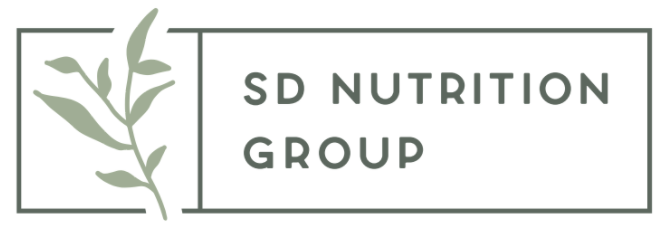Food Rules vs. Food Preferences
No one is born with a set of food rules governing how they eat, or categorizing foods into “off-limits” or good vs. bad. Food beliefs and food rules develop subtly over time as we’re exposed to the myriad of diet culture messaging throughout our lifetimes. Diets quickly teach us to override our natural food preferences and internal cues. Instead, diets teach us to rely on a set of external rules based on what diet culture deems is “healthy” and “good”.
This makes it really confusing to discern between what is a food rule and what is a true food preference. It can be hard to determine whether you have a true preference for eating sweet potatoes, or if you’ve just avoiding white potatoes for so long and convinced yourself you don’t like them because they’re a “bad” food.
What are food rules?
Food rules are arbitrary rules based on external information about what is “good” or “right” when it comes to eating, usually with the intention of losing weight, controlling body size, or a preoccupation with being “healthy”. Food rules are not based on your own body knowledge of what feels good to you or what your body is needing. They’re fueled by diet culture. Some example of food rules might be:
Determining how much to eat based on calorie counts (or counting anything)
Meals/snacks must be eaten at certain times
Avoiding sweets or “sugar” because they’re “bad”
Only eating whole grains because white bread/pasta is “bad”
Always choosing zero-calorie beverages because sweetened ones are “bad”
You’ll notice that with most food rules, it’s black and white- using “always”, “only”, and “never” when describing the food rule. There’s no room for flexibility, meaning when the food rule inevitably gets broken, it leads to feelings of guilt, shame, or failure.
What are food preferences?
Food preferences are choices that we make about food based solely on internal wisdom. It’s making a food choice based on what you enjoy most, what will satisfy your hunger and cravings, and what makes your body feel best. The decision comes from your own internal cues, not diet culture. There’s no right or wrong way to have a food preference, and food preferences might even change day to day, week to week, or month to month. Food preferences have nothing to do with controlling your body size or weight. Choosing one food over another based on preference does not lead to any feelings of guilt, shame, or wondering if you made the “right” choice. They can be rooted in health, but leave room for flexibility. Some examples of food preferences:
Having a snack or something to eat every 2-3 hours because it feels good and keeps you from getting too hungry
Including a fruit at breakfast because it tastes sweet and fresh, and the fiber helps with digestion
Preferring sweet potato fries over regular because you like the flavor
Choosing to have chicken instead of beef at dinner because you like the way it tastes and feels good in your stomach
Not liking nuts in brownies because of the taste or texture
Rebecca Scritchfield mentions in her book Body Kindness that the biggest difference between a food preference and a food rule is fear. Food rules are rooted in fear- fear that certain foods will cause weight gain or make us unhealthy, or fear that choosing certain foods is bad or morally wrong. A couple of food questions to ask yourself when determining whether something is a preference or a rule are:
Would I get anxiety/would this cause me distress if this option wasn’t available?
For example, if you go out for sushi and they only have white rice as an option, how would you react? If it was a preference for brown rice, you might be slightly disappointed they didn’t have your first choice, but white rice goes well in sushi and makes sense for the meal. You’re able to make a choice and move on. If it was a food rule, it would feel very stressful having to break a rule about eating white rice.
If I didn’t know the nutritional content of this food (calories/carbs/ingredients/etc.), would I still like it?
If the answer is yes, it’s probably a food preference. If the answer is no, it’s likely a food rule. Remember, preferences don’t follow any rigid numbers. They’re purely based on your own likes and dislikes of flavor, texture, and how it feels in your body. Food rules, however, are externally based and do tend to follow rigid guidelines. A “preference” for the lowest calorie option, no matter what you’re in the mood for, is a rule.
You should also ask yourself “What’s the reason for my choice?”. You might even still make the same choice (ex. choosing brown rice vs. white rice), but the intention is different because it’s based on what you really want, not what diet culture says is right or what you think you “should” do. One of the best ways to explore this is to experiment with food. If you always order sweet potatoes, try regular potatoes. Or if you always use cauliflower rice, try regular rice. What thoughts, feelings, or fears come up? Which do you genuinely enjoy eating more?
To quote Ellyn Satter, “Normal eating is flexible. It varies in response to your hunger, your schedule, your food, and your feelings”. True food preferences are flexible, so if you find yourself often stuck in rigid thinking about food, it might be time to challenge some food rules. And as always, remember to be gentle with yourself throughout the process. Letting go of food rules can be tough. For more support or to work one-on-one with a dietitian at SD Nutrition Group, you can find our contact info here.
